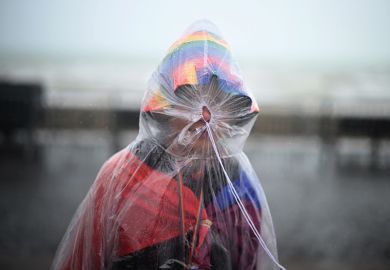What sorts of books inspired you as a child?
Although I was born in London, I spoke only Greek Cypriot dialect when I started school. Speaking, reading and writing English, therefore, developed simultaneously, rather like an adult learning a language, with the early primary school books introducing me to both English and reading. The first volume that took me to another world, the function of any work of history or literature, came from the pen of Enid Blyton. I read it around the age of 10, although I cannot remember the title.
Your new book explores London as a ‘migrant city’. What first piqued your interest in its neglected immigrant stories?
My interest in immigrant London partly emerged from my personal experiences and partly from the focus of my academic career, which began with a PhD thesis on Germans in Britain during the First World War, leading to a more general focus on immigration in British history. While migration has characterised the evolution of the country as a whole, most migrant groups have counted the majority of their population in London, yet nobody had written a migrant history of London.
Can you recommend a few memoirs that offer a particularly vivid picture of immigrant London life in particular times and communities?
Scholars of migration tend to ignore social mobility, yet some of the most interesting memoirs and biographies come from members of ethnic groups who move upwards. They range from Selig Brodetsky’s Memoirs: From Ghetto to Israel, which describes his Jewish childhood in the East End of London, from where he would progress to a Cambridge education and then a chair in mathematics at the University of Leeds, to Ian Wright’s My Life in Football: An Autobiography, which outlines his early family life as the child of Jamaican immigrants, his scrapes with the law and his breakthrough with Crystal Palace and subsequent stardom at Arsenal.
What books offer valuable overviews of the politics of migration, refugees and race?
Although the study of migration has a long history, I would point to three seminal books that appeared in quick succession in the late 1980s. First, Paul Gilroy’s There Ain’t No Black in the Union Jack: The Cultural Politics of Race and Nation, which blew apart concepts of Britishness. Second, Colin Holmes’ John Bull’s Island: Immigration and British Society, a meticulous historical account. And third, John Solomos’ Race and Racism in Contemporary Britain, which detailed the inescapable structural racism of British society and politics.
What is the last book you gave as a gift, and to whom?
I bought Dishoom: “From Bombay with Love”, an Indian cookbook, for my wife, Mundeep, at Christmas. I actually do most of the (easy) cooking, and as a food historian in my other life, I eat fresh meals at home, always (in the summer and autumn) using ingredients grown in my garden.
What books do you have on your desk?
I have just read two books by authors with whom I am appearing on a panel at Jewish Book Week in London. Philipp Ther’s The Outsiders: Refugees in Europe since 1492 is a thorough and concise account, while Amelia Gentleman’s brilliant The Windrush Betrayal: Exposing the Hostile Environment virtually reduced me to tears because it told stories of people who reminded me of my West Indian schoolmates, highlighting the politics and bureaucracy of deportation from Britain.
Panikos Panayi is professor of European history at De Montfort University. His latest book is Migrant City: A New History of London (Yale University Press).
POSTSCRIPT:
Print headline: Shelf life: Panikos Panayi
Register to continue
Why register?
- Registration is free and only takes a moment
- Once registered, you can read 3 articles a month
- Sign up for our newsletter
Subscribe
Or subscribe for unlimited access to:
- Unlimited access to news, views, insights & reviews
- Digital editions
- Digital access to THE’s university and college rankings analysis
Already registered or a current subscriber? Login








